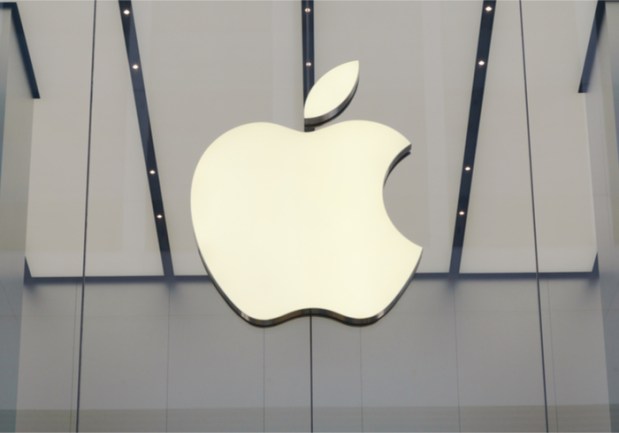Apple Beats On Earnings Despite Sluggish iPhone Shipments

After weeks of speculation, falling stock prices and an analyst undercurrent that yesterday’s earnings report might mark the beginning of the end for the iPhone X due to weak sales, Apple’s results are in – and they cruised easily past analyst estimates.
“Customers chose iPhone X more than any other iPhone each week in the March quarter, just as they did following its launch in the December quarter,” Tim Cook told investors as Apple announced Q2 earnings on Tuesday. “This is the first cycle in which the top-of-the-line iPhone model has also been the most popular.”
Cook had a lot to share with investors during the call, including big performance for Apple’s Services segment (home of Apple Pay, Apple Music and the App Store), a big uptick in subscription services and much larger than expected growth in greater China.
But, as always, all eyes were on the iPhone – and its growth – as the best predictor of Apple’s overall health. And, on the whole, the numbers were what investors wanted to see.
By the Numbers
Apple revenue increased 16 percent year-on-year to $61.1 billion in the fiscal second quarter – its fastest growth in two years and ahead of analyst estimates of $60.9 billion. Forecasts for next quarter’s revenue fell in the range of $51.5 billion to $53.5 billion, also ahead of Wall Street.
Apple sold 52.2 million iPhones in the fiscal second quarter, up a slim 2.9 percent from a year earlier and slightly below the 52.3 million that analysts had been looking for on average. That said, iPhone sales were well ahead of many of the diminished predictions of the last few weeks as data from supplier component sales made the rounds among investors. Price per phone also came in a bit below the average investor consensus of $740, at $728 per phone.
Away from the core iPhone business, Apple reported record services revenue of $9.2 billion, a 31 percent growth rate year-on-year and a handy beat on analysts’ $8.3 billion forecast.
Apple CEO Tim Cook noted that all of the services component parts – the App Store, Apple Music, iCloud storage and Apple Pay – posted record results in sales and growth of at least 25 percent year on year (though they did not break out any more specific numbers). Apple estimates its Services will be a $50 billion annual business by 2021.
Cook also said that Apple now has 270 million paid subscribers across all of its applications and services as of the end of the March quarter, up by 100 million from the same period a year earlier.
Also showing notable growth was Apple’s Other Product category, which saw its total revenue up 38 percent to $3.95 billion. The category includes AirPods, the Apple Watch, Apple TV and the HomePod. Cook noted in his remarks that sales of wearable devices jumped almost 50 percent year-over-year.
Apple also reported $13 billion in revenue from greater China during its second fiscal quarter — a 21 percent year-over-year spike. That pushes Apple’s China revenue to be on par with its European revenue.
“The guidance for the third quarter alleviates investor concerns on iPhone shipments,” said Shannon Cross of Cross Research. “It was a solid quarter.”
Areas of Interest
While CEO Tim Cook was his usual buoyant self about all aspects of Apple’s performance, analysts had some tough questions, particularly about the iPhone X and its longer-term prospects.
Cook emphasized in his remarks how “beloved” the product was, noting that this quarter, for the first time since Apple split its product offering in 2014 with the iPhone 6 and 6 Plus, the premium model was the most sold iPhone. He noted that top seller status has been true in the U.S. every week since the iPhone X launch, and was true in greater China during the quarter ending last month.
Though, perhaps a bit surprisingly, Cook did at least nod at the results that indicate top seller or not – the iPhone X has perhaps not lived up to what was expected of it.
“It’s one of those things where a team wins the Super Bowl. Maybe you want them to win by a few more points, but it’s a Super Bowl winner and that’s how we feel about it,” Cook noted in answer to one analyst wondering about the iPhone X’s apparently sluggish sales performance. “I could not be prouder of the product.”
Apple Pay – after a long run of being sort of cold-shouldered during the quarterly call – made a pretty significant appearance, as Cook had some news to offer in the context of the victory lap over the services department’s big growth.
According to Cook, Apple Pay will be online in three new countries soon: Norway, Poland and Ukraine will all see its launch over the “next several months.” Cook also noted that active Apple Pay users have doubled over the course of the year, while transactions have tripled. Apple, as usual, did not offer a hard number to go with that. PYMNTS does a quarterly study of Apple Pay adoption and usage, and it reflects flatline growth over the three-plus years it has been in the market.
Cook attributed Apple Pay’s growth to its transit use case.
“We believe the availability of Apple Pay at major transit systems has been a key driver of adoption among commuters, and in March we launched Express Transit with Apple Pay in Beijing and Shanghai — the second and third largest transit systems in the world.”
The Other category – home of AirPods, iPad and the newly released HomePod – also got a shout-out, mostly in the form of the Apple Watch, which Cook called “transformative to the wearable market.” HomePod was also mentioned as “unquestionably the best home music listening experience on the market,” and Cook told the one analyst who asked that Apple was “busy adding functionality to it all the time.”
The specifics of that functionality, whether it involves Siri or becoming a smarter smart speaker, wasn’t mentioned or asked about. In fact, Siri didn’t merit so much as a mention.
Cook was, however, asked about the potential for a looming trade war with China and whether it was a point of concern, given Apple’s newly rediscovered strength in the market.
“My view is that China and the U.S. have an unavoidable mutuality, where the U.S. only wins if China wins, and China only wins when the U.S. wins – and the whole world only wins when they are both winning. There’s a lot that binds us together, so I’m actually very optimistic.”
And, at the end of earnings – buoyed by stronger-than-expected results and the $100 billion stock buyback Apple also took the occasion of earnings to announce – it seems investors share Apple’s optimism for now. Stocks popped up 3 percent in after-market trading.
